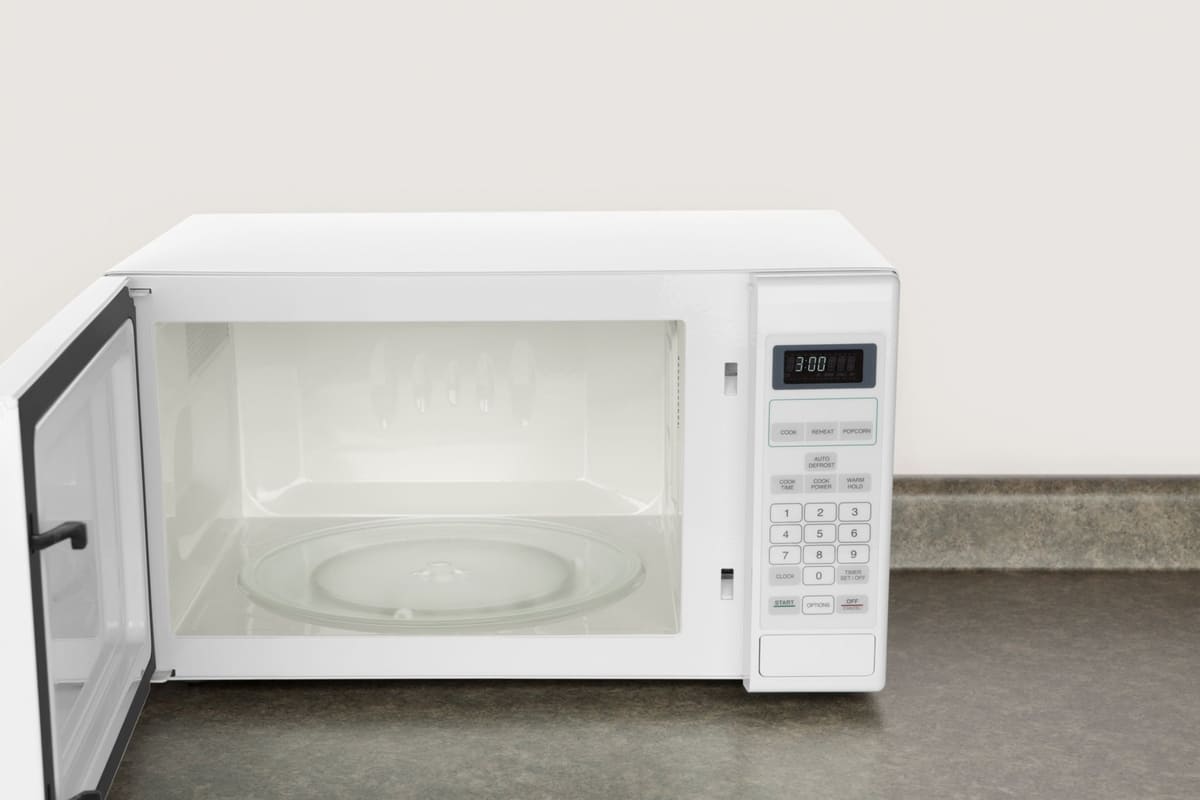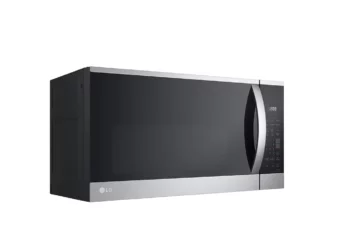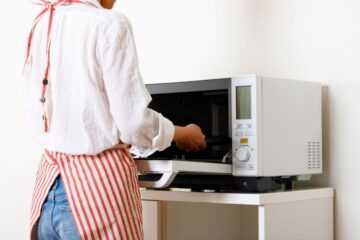Styrofoam is a lightweight material that is commonly used for food packaging and disposable containers. Many people wonder if it is safe to microwave Styrofoam, as it is often used for takeout containers and reheating leftovers. The answer is not a straightforward yes or no, as it depends on the type of Styrofoam and whether it is labeled as microwave-safe.
Containers made from Styrofoam or expanded polystyrene (EPS) foam are not safe to use in a microwave unless they have a microwave-safe label. This is because they may leach chemicals into the food, which could be harmful to health. According to Healthline, if you are using a Styrofoam container, you should check to see if it has a microwave-safe label. If it doesn’t, it is recommended that you transfer the food to a ceramic or glass container before microwaving it.
While the U.S. Food and Drug Administration (FDA) has deemed polystyrene food containers and packaging to be safe for hot and cold food items, not all foam containers should be microwaved. To determine if a foam container is microwave-safe, look for a small symbol of a microwave with wavy lines. It is important to note that even if a container is labeled as microwave-safe, it should only be used for the recommended amount of time and not overheated.
What is Styrofoam?
Styrofoam is a brand name for a type of expanded polystyrene foam. It is a lightweight, durable, and versatile material that is commonly used in packaging, insulation, and disposable food containers. Styrofoam is made from polystyrene beads that are expanded and fused together to create a foam product.
Styrofoam is known for its insulating properties, which make it an excellent choice for packaging fragile items like electronics and glassware. It is also used in construction as insulation for walls, roofs, and foundations. In addition, Styrofoam is often used in disposable food containers like cups, plates, and take-out containers.
While Styrofoam is a popular material for packaging and food containers, it is not without controversy. Some studies have suggested that Styrofoam may be harmful to human health and the environment. For example, when Styrofoam is heated, it can release toxic chemicals into the air and food. In addition, Styrofoam is not biodegradable and can take hundreds of years to break down in landfills.
Because of these concerns, many cities and states have banned the use of Styrofoam in food containers and packaging. Some companies have also stopped using Styrofoam in their products in response to consumer demand for more sustainable and environmentally-friendly alternatives.
Can You Microwave Styrofoam?
Styrofoam is a popular material for food packaging and takeout containers. However, many people wonder if it’s safe to microwave Styrofoam. In short, the answer is: it depends.
Why You Shouldn’t Microwave Styrofoam?
Styrofoam is made from polystyrene, which can release harmful chemicals when heated. When Styrofoam is microwaved, it can leach these chemicals into your food. According to Medical News Today, “The chemicals can migrate into food and beverages and cause a range of health problems, including cancer and developmental delays in children.”
What Happens When You Microwave Styrofoam?
When Styrofoam is microwaved, it can melt or warp, which can cause it to release chemicals into your food. This can not only be harmful to your health, but it can also ruin your food and make a mess in your microwave.
Alternatives to Microwaving Styrofoam
If you want to heat up food in the microwave, there are several alternatives to Styrofoam. Here are a few options:
- Glass containers: Glass is a safe and durable material for microwaving food. Just make sure the container is labeled as microwave-safe.
- Ceramic containers: Ceramic is another safe material for microwaving food. Again, make sure the container is labeled as microwave-safe.
- Paper plates or bowls: If you’re in a pinch, paper plates or bowls can be a good alternative to Styrofoam. Just make sure they’re not coated in plastic or wax, as these coatings can melt in the microwave.
- Reusable containers: If you’re looking for a more sustainable option, consider investing in some reusable containers made from safe materials like glass or stainless steel.
Is All Styrofoam Unsafe to Microwave?
When it comes to microwaving Styrofoam, not all types of Styrofoam are created equal. In fact, there are different types of Styrofoam, each with its own properties and safety concerns. This section will help you understand the different types of Styrofoam and whether or not they are safe to microwave.
Understanding the Different Types of Styrofoam
Styrofoam is a type of plastic foam that is used in a wide variety of products, including food containers, packing materials, and insulation. There are two main types of Styrofoam: expanded polystyrene (EPS) foam and extruded polystyrene (XPS) foam.
EPS foam is the type of foam that is commonly used in food containers and packing materials. It is lightweight and has good insulating properties. XPS foam, on the other hand, is denser and stronger than EPS foam, and is commonly used in insulation.
Microwaving Expanded Polystyrene (EPS) Foam
The safety of microwaving EPS foam is a topic of debate among experts. According to the U.S. Food and Drug Administration (FDA), EPS foam is safe for use in food packaging, but it is not recommended for use in the microwave. This is because EPS foam can release harmful chemicals when it is heated, which can then contaminate the food.
However, some EPS foam containers are labeled as microwave-safe. These containers are designed to withstand the heat of the microwave without releasing harmful chemicals. If you are unsure whether or not a particular EPS foam container is safe to microwave, it is best to err on the side of caution and transfer the food to a microwave-safe container.
Microwaving Extruded Polystyrene (XPS) Foam
XPS foam is not safe to microwave under any circumstances. This is because XPS foam is made with a blowing agent that can release toxic fumes when it is heated. These fumes can be harmful if they are inhaled, and can also contaminate the food.
In addition, XPS foam is not designed to withstand the heat of the microwave, and can melt or deform when it is heated. This can cause the container to leak or spill, which can be messy and potentially dangerous.
In conclusion, not all types of Styrofoam are safe to microwave. While some EPS foam containers are labeled as microwave-safe, it is generally best to transfer the food to a microwave-safe container to avoid any potential health risks. XPS foam, on the other hand, should never be microwaved under any circumstances.
How to Safely Microwave Food?
Microwaving food can be a quick and convenient way to prepare meals, but it’s important to do it safely. Here are some tips to help you safely microwave food.
Microwave-Safe Containers
When microwaving food, it’s important to use a microwave-safe container. Not all containers are safe to use in the microwave, including Styrofoam containers. According to Healthline, “Styrofoam is a type of polystyrene foam that’s commonly used for food packaging and insulation. While it’s great for keeping food and drinks hot or cold, it’s not safe to microwave.”
If you’re unsure whether a container is microwave-safe, look for a label that says “microwave-safe.” You can also use containers made of glass, ceramic, or microwave-safe plastic. Avoid using containers made of metal or aluminum foil, as they can cause sparks and fires in the microwave.
Tips for Microwaving Food
Here are some tips to help you safely microwave food:
- Cover food with a microwave-safe lid or plastic wrap to prevent splatters and retain moisture.
- Stir or rotate food halfway through cooking to ensure even heating.
- Use a lower power setting for longer cooking times to prevent overcooking or burning.
- Let food stand for a few minutes after microwaving to allow for even cooking and to prevent burns from hot steam.
- Be careful when removing food from the microwave, as containers and food can be very hot.
Conclusion
In conclusion, the question of whether or not one can microwave Styrofoam is a bit complicated. While it is technically safe to microwave Styrofoam, it is not recommended due to the potential health risks associated with the material breaking down and releasing harmful chemicals.
It is important to note that not all Styrofoam containers are created equal. Some may be labeled as microwave-safe, while others are not. It is always best to err on the side of caution and avoid microwaving Styrofoam altogether, unless it is labeled as safe to do so.
If you must microwave Styrofoam, it is generally advised not to exceed 15 to 30 seconds, unless it is a microwave-safe container. Additionally, it is important to avoid microwaving fatty foods such as meats and cheeses in Styrofoam containers, as the styrene in the material can potentially migrate into the food and cause health risks.




